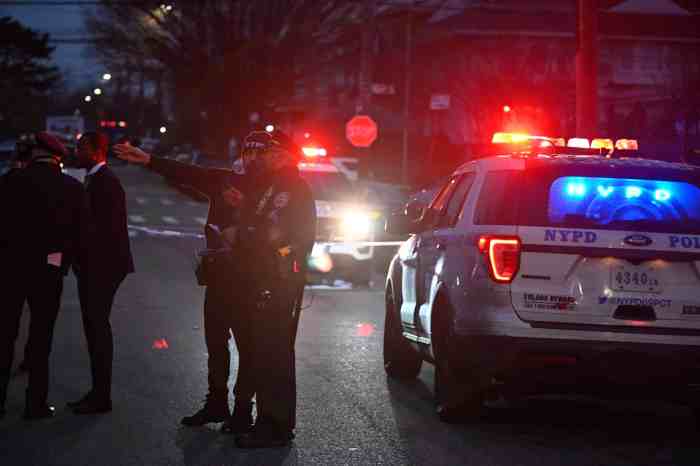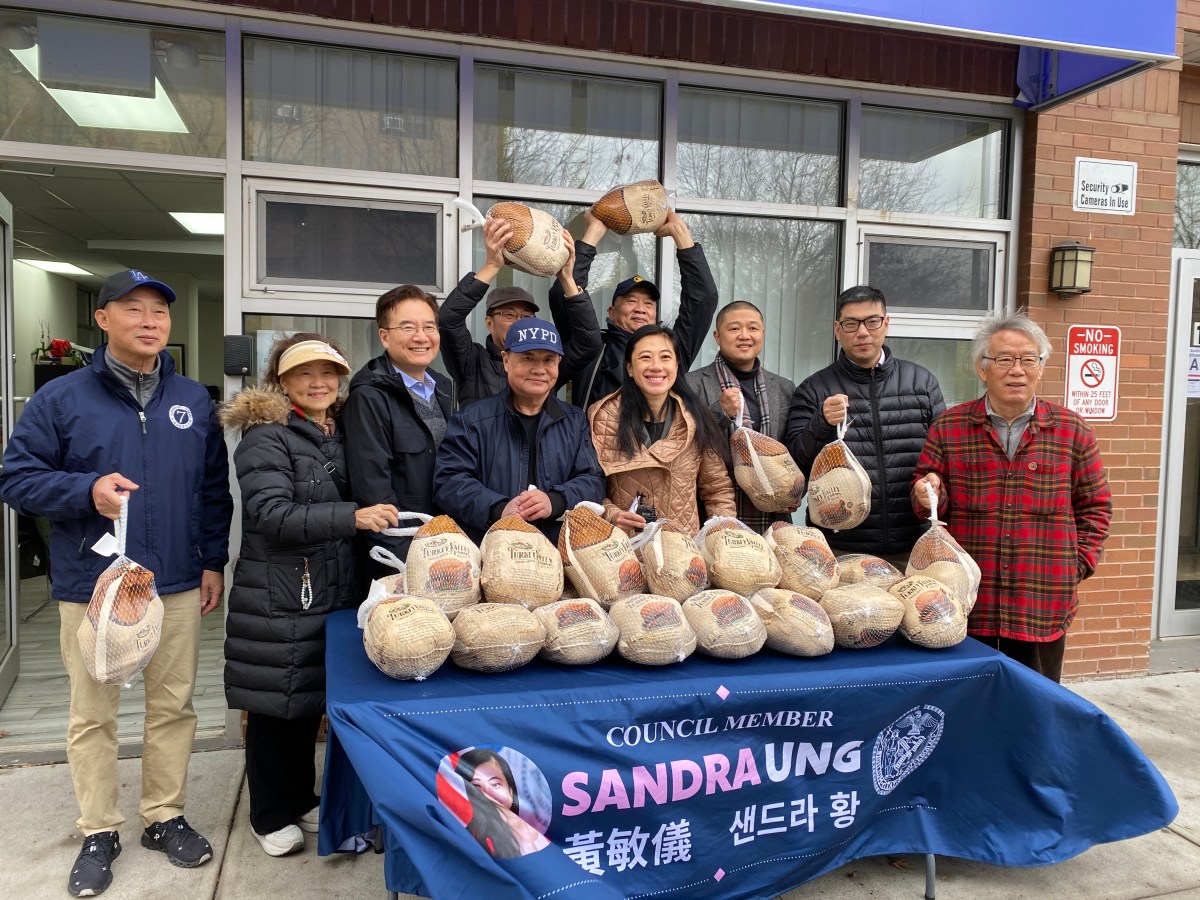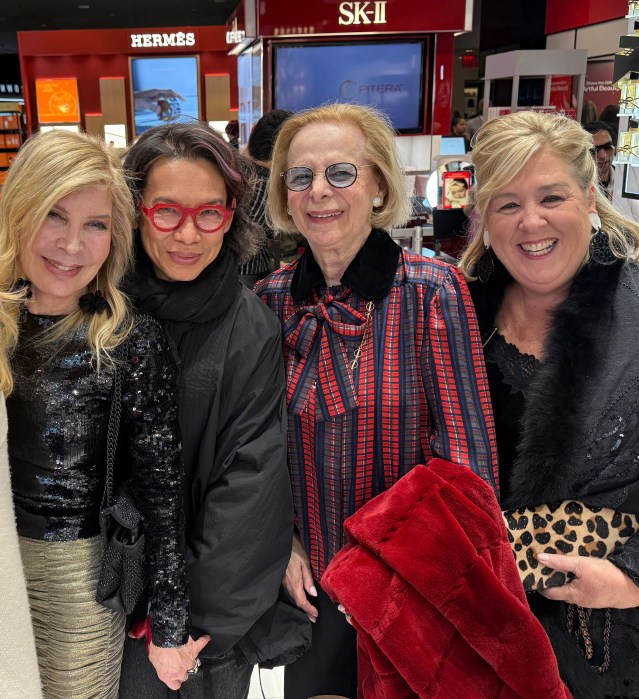-
 Tandoor (pictured)
Tandoor (pictured)
95-24 Queens Blvd.
The local spot for authentic Indian cuisine, including goat biryani and boti kabab.
718-997-6800
Gyro Grill
63-02 Woodhaven Blvd.
This Greek restaurant serves brunch, lunch and dinner treats such as gyros, falafel and souvlaki.
Ben’s Best
96-40 Queens Blvd.
A 71-year-old Kosher deli offering traditional meals such as pastrami sandwiches, chopped liver and corned beef.
” data-id=”112693362″ data-link=”https://amnewyork.wpengine.com/wp-content/uploads/2019/10/13752_image.jpg” class=”wp-image-1.12693362″/>Photo Credit: Linda Rosier -
 Tropix Bar and Lounge (pictured)
Tropix Bar and Lounge (pictured) 95-32 Queens Blvd.
This newly-renovated, tropical-themed nightclub has the only neighborhood bar that is open until 4 a.m.
Woodhaven House
63-98 Woodhaven Blvd.
In addition to a large beer and food menu, this Irish bar also has live music every weekend.
718-894-5400
Bridie’s
63-28 Woodhaven Blvd.
Head to this 35-year-old bar and grill to watch national baseball, football, basketball and hockey games on its 18 flat-screen TVs.
” data-id=”112693406″ data-link=”https://amnewyork.wpengine.com/wp-content/uploads/2019/10/13753_image.jpg” class=”wp-image-1.12693406″/>Photo Credit: Linda Rosier -
 Lost Battalion Hall Recreation Center (pictured)
Lost Battalion Hall Recreation Center (pictured)
93-29 Queens Blvd.
This public facility is run by the city Parks Department and offers a gym and fitness equipment, an arts and crafts room and a computer center.
HotYoga4You
65-07 Woodhaven Blvd.
The studio offers 33 hot yoga classes each week for yogis of all levels.
” data-id=”112693435″ data-link=”https://amnewyork.wpengine.com/wp-content/uploads/2019/10/13755_image.jpg” class=”wp-image-1.12693435″/>Photo Credit: Linda Rosier -
 Rego Center Mall (pictured)
Rego Center Mall (pictured)
61-11 Junction Blvd.
The new shopping features big box stores like Century 21, an Aldi supermarket, Costco and Toys “R” Us.
Rego Park Fruit Farm
94-01 63rd Drive
Find a variety of fruit and veggies from across the globe at this fresh food market.
718-997-8360
JB Fresh Seafood Supermarket
93-17 63rd Drive
Pick from a fresh catch and stock up on Asian specialties like Japanese noodles and Chinese dumplings.
718-896-6170
” data-id=”112693363″ data-link=”https://amnewyork.wpengine.com/wp-content/uploads/2019/10/13133_image.jpg” class=”wp-image-1.12693363″/>Photo Credit: Linda Rosier -
 Trains:
Trains:M, R to 67th Avenue, and 63rd Drive
Buses:
Q11, Q21, Q38, Q52, Q53, Q59, Q60, Q72, Q88, QM10, QM11, QM12, QM16, QM17, QM18, QM42, BM5, BM15
” data-id=”112693452″ data-link=”https://amnewyork.wpengine.com/wp-content/uploads/2019/10/13756_image.jpg” class=”wp-image-1.12693452″/>Photo Credit: Linda Rosier -
 Median sales price: $290,498
Median sales price: $290,498
Number of units on market: 100
Median rental price: $1,900
Number of rentals on market: 1,006
(Source: StreetEasy)
” data-id=”112693360″ data-link=”https://amnewyork.wpengine.com/wp-content/uploads/2019/10/13758_image.jpg” class=”wp-image-1.12693360″/>
Photo Credit: Linda Rosier -
 The Alexander luxury tower is Rego Park’s foray into the city’s luxury development boom, but residents say it hasn’t affected the neighborhood’s ambiance.
The Alexander luxury tower is Rego Park’s foray into the city’s luxury development boom, but residents say it hasn’t affected the neighborhood’s ambiance.At 27 stories tall, the 312-unit building, named after the department store that was formerly on the property, is the tallest residential structure in the neighborhood.
It serves as a high-end alternative to the red-brick co-ops and other apartments in the area, according to Andrea Mignone, director of property marketing for Rose Associates, which manages the building.
“This is a step up,” she said.
The glass building at 61-55 Junction Blvd., which filled all of its leases in August, has a host of amenities that are common to new rentals in Manhattan and Brooklyn, but relatively new to Rego Park.
They include a game room, a gym, rooftop terraces and a rooftop playground.
What does set the Alexander apart from the other city luxury rentals is its placement on the same block as the Rego Center mall, which gives tenants easier access to stores like Costco, Panera Bread and Century 21.
Area residents said the urban flair from the tower doesn’t stick out from the, smaller, brick faced apartment buildings in Rego Park.
Joy Ross, 64, who now lives in Park Slope but was formerly a Rego Park resident for and often returns to visit family and do her shopping, said the tower’s placement next to the mall helps it blend in.
“It certainly doesn’t look like an eyesore,” she said.
Queens Community Board 6 district manager Frank Gulluscio, said the Alexander has set a bar for future high-end development in the neighborhood.
“I think in New York City, there is a place for everything,” he said.
” data-id=”112693474″ data-link=”https://amnewyork.wpengine.com/wp-content/uploads/2019/10/13759_image.jpg” class=”wp-image-1.12693474″/>Photo Credit: Linda Rosier
Rego Park’s tree-lined streets, Tudor-style homes, brick apartment buildings and mom-and-pop shops have always attracted New Yorkers looking for a taste of suburban life in the Big Apple.
The area has acquired some urban flair, however, as new residential towers and a 950,000-square-foot shopping center sprouted in the last decade.
But despite the new developments, residents say the central Queens neighborhood is still an affordable place to live.
“It’s one of the very few places in Queens left where you can say, ‘I have a family, I want to live here and I can afford it,’” said Danny Marte, 30, who moved here with his wife and 3-year-old daughter from Corona in 2011.
Rego Park borders Forest Hills, Corona, Middle Village and Elmhurst, and residents have easy access to nearby attractions like the Queens Center Mall, Flushing Meadows-Corona Park and Citi Field.
The M and R trains run from the 63rd Drive station to midtown Manhattan in 30 minutes, and the area’s proximity to major roadways like the LIE, Queens Boulevard and Woodhaven Boulevard is ideal for drivers.
Its housing market also has an array of options. Many residences date to the 1920s and are a mix of detached and attached single-family homes and apartment buildings that are between five and 10 stories tall.
Cultural diversity is also in abundance here, noted Ira Schulte, a Manhattan real estate sales broker with Citi Habitats who has lived in Rego Park for 37 years.
“I have neighbors who are Muslim. I have neighbors who are Hispanic. I have neighbors who are Asian,” he said. “They’re from all over the world on my block.”
According to the latest U.S. census data, 48.8% of Rego Park residents speak a language other than English at home.
Helen Layne, 36, a marketing engineer who moved to the neighborhood six years ago from Elmhurst and lives with her husband Ali, their 7-month-old daughter and two dogs, said she enjoys the ethnic grocery stores on 63rd Drive and the restaurants along Queens Boulevard.
“It makes living here more fun, because you can learn a new culture just by walking down the block,” Layne said.
Locals can head to the BlackSea Fish & Grill at 95-36 Queens Blvd. for Mediterranean cuisine, Tandoor at 95-24 Queens Blvd. for Indian, and Marani at 97-26 63rd Road for Glatt Kosher Georgian food, among others.
And while small businesses thrive here, big-name chains are also gradually coming in. At the epicenter of that growth is the Rego Center Mall, which opened at Junction Boulevard and 62nd Drive in 2012.
With nearly a million square feet of space, the mall, which was formerly an Alexander’s department store, houses a Costco, a Toys “R” Us, an Aldi supermarket and other big box stores.
Its canopy-covered plaza is a popular meeting place for teens and families, who grab cups of coffee and snacks from the food court.
Joy Ross, 64, of Park Slope, used to live in Rego Park and returns often to visit her sister who still lives in the neighborhood. She heads to the mall to do her shopping.
“It’s really pretty convenient,” she said while browsing the stores on a recent Sunday. “I get a lot of my groceries from here.”
But although the growth in visitors is bringing economic development to Rego Park, community leaders and residents say it is also exacerbating its persistent problem with traffic.
It’s not uncommon to see cars double- and triple-parked along thoroughfares like Junction Boulevard, 97th Street and 64th Avenue.
Some drivers make several trips around a block, playing a game of motor musical chairs, looking for an open spot, according to Frank Gulluscio, district manager for the local Community Board 6.
“We haven’t had many accidents, but because of the volume of cars and people it’s really a time bomb before we have something,” he said.
Real estate development also contributes to traffic congestion, as streets around construction sites become clogged with trucks and other work vehicles.
Among other projects under development is a seven-story condo going up at 97-45 63rd Drive.
In recent years, two luxury rental developments were built on 99th Street between 62nd and 63rd drives, as was the Alexander tower, which opened in the summer of 2015 at 61-55 Junction Blvd., next to the mall.
But attention the area is getting from developers and retailers doesn’t appear to be affecting home sales prices in the area, according to data from the listings site StreetEasy.
The median sales price in Rego Park was $290,498 in 2015, up from $282,997 in 2013, the site found.
The median rent, however, rose from $1,600 in 2013 to $1,900 last year — with the increase driven mostly by the higher rents in new luxury buildings.
Schulte doesn’t expect Rego Park to lose its housing affordability anytime soon.
“The value is pretty tremendous and I don’t think there is anything that is changing it,” he said. “It’s not going to become Williamsburg.”
































